New England Flavor | Eating New Englandy
Eating locally should also mean embracing traditional regional food. Find 15 eras of authentic New England flavor at these favorite eateries.
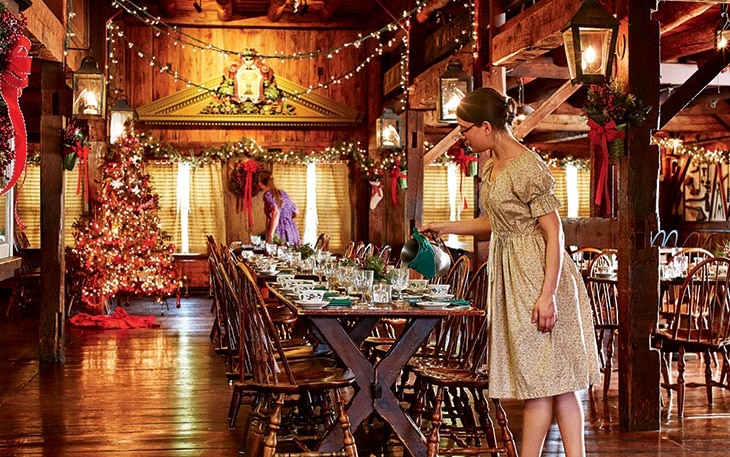
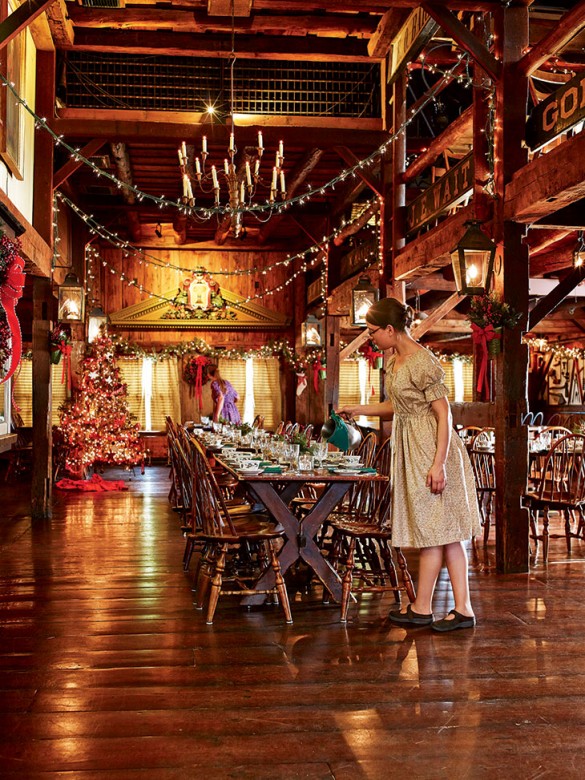
Photo Credit : Heath Robbins
WHERE TO FIND THE BEST NEW ENGLAND FOOD | ERA BY ERA
NATIVE FOODS Plimoth Plantation | Plymouth, MA
The atmosphere may be a far cry from a traditional Wampanoag feast, but the cafeteria-style Patuxet Cafe at Plimoth Plantation does serve a rotating lineup of Native foods (alongside English Colonial dishes like peascods and pumpkin pie and modern sandwiches and snacks). There’s succotash, venison stew, stuffed quahogs, squash, mint tea, and nasamp (corn porridge) with berries. And at the nearby Wampanoag homesite, Native interpreters are usually cooking foods over live fire using traditional methods and truly local, seasonal ingredients.
Photo Credit : courtesy of Plimoth Plantation
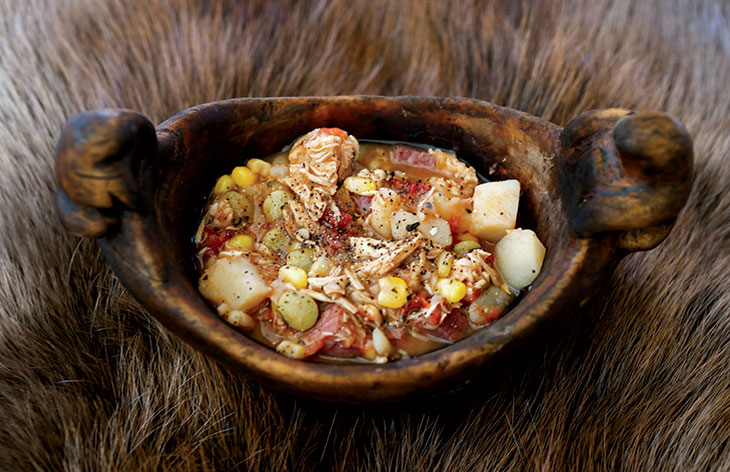
Photo Credit : courtesy of Plimoth Plantation
THE COLONIAL ERA Salem Cross Inn | West Brookfield, MA
If the earliest New Englanders knew the sting of hunger, their grandchildren enjoyed comparative bounty. By the 1700s, the typical Colonial New England diet for a prosperous family included a midday meal of meat, vegetables, and maybe a soup, pudding, or tart. You can enjoy just such a 1700s-inspired meal at the Salem Cross Inn’s “Fireside Feasts,” cooked in the open hearth of a large fieldstone fireplace.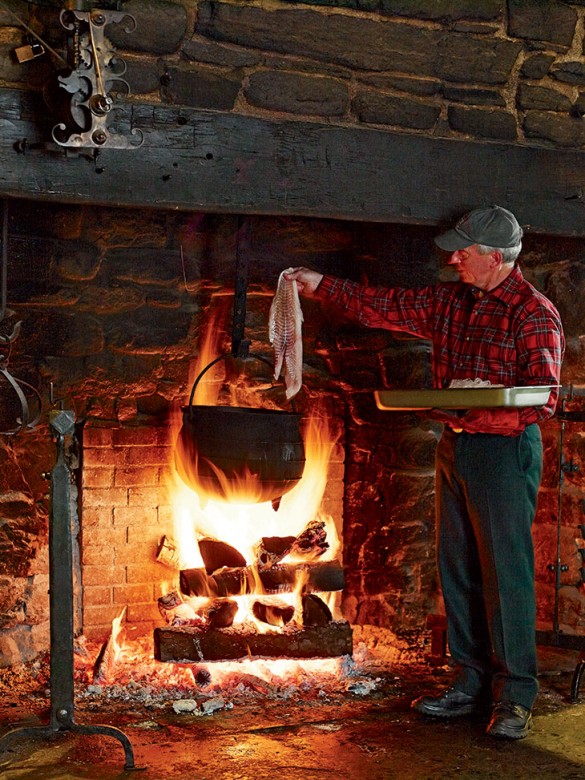
Photo Credit : Heath Robbins
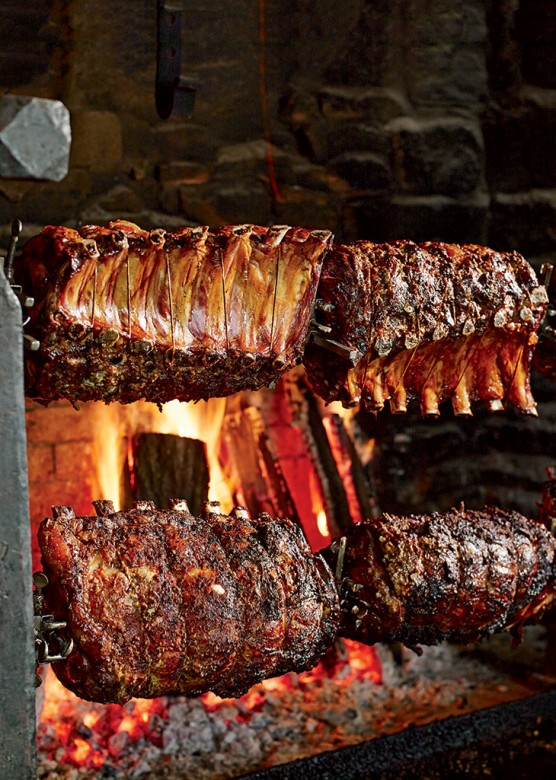
Photo Credit : Heath Robbins
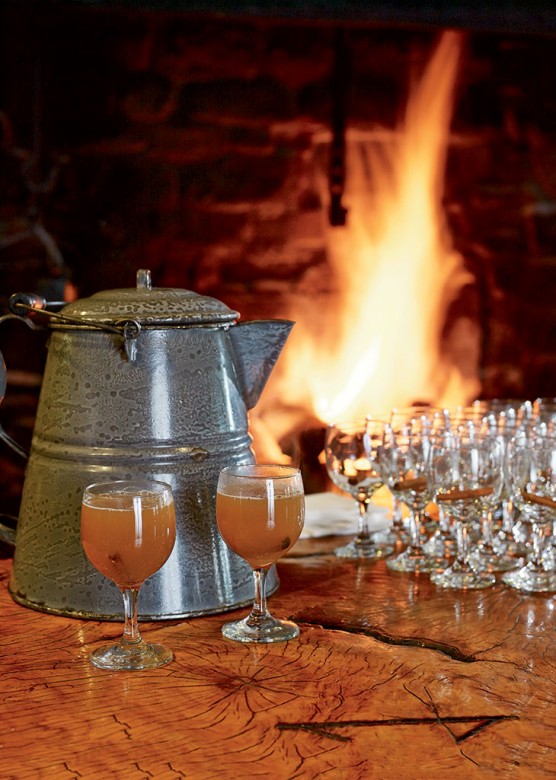
Photo Credit : Heath Robbins
THE REVOLUTIONARY ERA The Griswold Inn | Essex, CT
A few hundred yards from the banks of the Connecticut River in Essex, Connecticut, the sound of cheerful voices fills the street outside The Griswold Inn, where on many nights, regulars gather by the fire for live music and sing-alongs. “The Gris” first opened its doors in 1776, while nearby crews built the Revolutionary warship Oliver Cromwell; it has served both water and land travelers since then. Self-dubbed “The Oldest Continuously Operating Inn in America,” its dining-room walls are lined with maritime art and firearms used during both the Revolutionary War and the War of 1812. The inn’s historic dining rooms serve seven days a week, but one special treat, one of the restaurant’s most popular dishes, its roast prime rib of beef, is served only Friday through Sunday nights. Great local taste: The butter served with bread at each table is sweetened with a dash of maple syrup. —Jocelyn RuggieroThe Griswold Inn.36 Main St., Essex, CT. 860-767-1776; griswoldinn.comTHE 1800s Old Sturbridge Village | Sturbridge, MA
Old Sturbridge Village gives visitors the opportunity to not just eat in 19th-century style, but to cook using authentic period ingredients, tools, and methods. In their “Dinner in a Country Village” event series, held in the Parsonage building weekly, January through March (with additional dates in November), costumed interpreters show guests how to cook soup over a fire, roast meat using a tin reflector, bake bread and pie in a wood-fired oven, and whip cream with birch twigs. As evening settles in, guests enjoy the fruits of their labors by candlelight.
Photo Credit : Mark Wilson
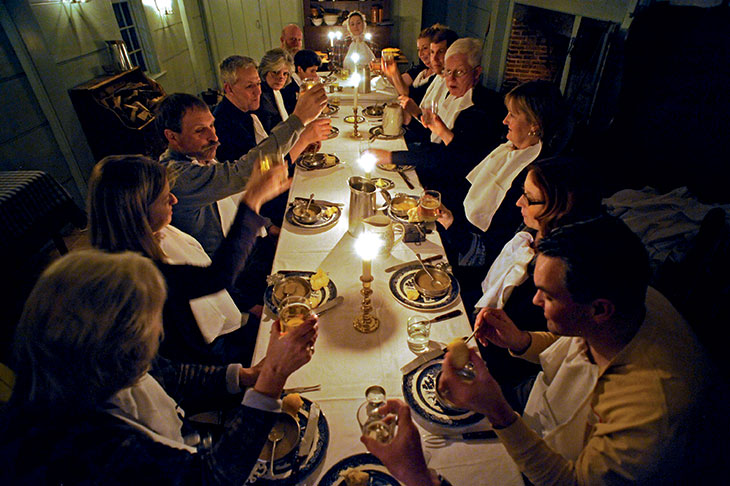
Photo Credit : Mark Wilson
THE SHAKER MOVEMENT Hancock Shaker Village | Pittsfield MA
At Hancock Shaker Village’s autumn “Shaker Suppers”–the last of which this year takes place on Saturday, November 29–early-19th-century interpreters begin by leading guests on a tour of the Village’s many historic buildings, including the iconic 1826 Round Stone Barn. Following a cheese-and-cider reception, supper is served by candlelight in the Believers’ Dining Room. Guests sit “family-style” to enjoy such traditional dishes as lentil soup, cranberry pot roast, carrot pudding, scalloped parsnips, and bread pudding. Many of the vegetables and fruits served are grown in the gardens that still thrive at Hancock. —J. R.Hancock Shaker Village,1843 West Housatonic St., Pittsfield, MA. 413-443-0188; hancockshakervillage.orgTHE INVENTION OF THE DINER Haven Brothers | Providence, RI
Every afternoon at 4:30, a weathered silver truck rolls up to Providence’s City Hall. Sal Guisti climbs a ladder to string a power cord from the truck to an electrical outlet on a nearby building. Minutes later, his diner is open for business.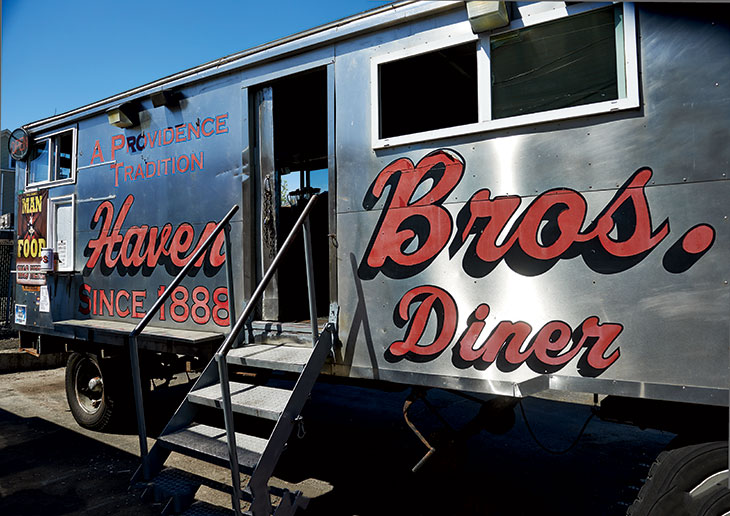
Photo Credit : Heath Robbins

Photo Credit : Heath Robbins
PORTUGUESE CUISINE Portugalia Marketplace | Fall River, MA
Their mass immigration to America may have peaked in the late 19th century, but Portuguese fishermen and explorers first set foot in the New World hundreds of years before; the first permanent settlers put down roots in the 1600s. Perhaps this is why Portuguese flavors–salt cod, kale soup, sausages–are so woven into New England cooking. Growing up on the south coast of Massachusetts, New England’s biggest Little Portugal, I cherish these foods as the flavors of childhood. We ate at home; no chef could ever cook better than our mothers. But there was one place that satisfied even my mom: Sagres, the oldest Portuguese restaurant in the area, destroyed in a fire in 2013 but reopened this past fall. Now I go to Portugalia Marketplace, a specialty shop/cafe, whose charcutaria offers an enviable collection of cured meats, including chourico and linguica (smoked pork sausage made with paprika, wine, and garlic); alheira (smoked sausage made from any meat other than pork); and farinheira (smoked sausage made with flour, pork drippings, and spice). Nearby are barrels of pickled vegetables, including onions, lupini beans, and olives. The jewel of the marketplace is its salt-cod room, which carries desalted loins and steaks (sold frozen), plus salted whole fish, cheeks, bits, and tongues—a delicacy. —David LeitePortugalia Marketplace.489 Bedford St., Fall River, MA. 508-617-9820; portugaliamarketplace.comACADIAN FOOD Dolly’s | Frenchville, ME
Like the tricolors of their star-kissed flag, faith, food, and family have bound generations of Acadians together since the mid-1700s, when British troops expelled them from Acadie, in present-day Maritime Canada. Sixteen families resettled in the Upper St. John River Valley. Rural isolation helped preserve their traditional fare–hearty food that favors simple one-pot meals, with ployes (thin buckwheat pancakes) substituting for bread at every meal. Ask locally about where to get the best taste of Acadie, and the answer, aside from “my mother’s house,” is usually “Dolly’s.” Since 1988, this homespun Frenchville restaurant has dished out scratch-made chicken stew with dumplings; cretons, a pork-based spread; and, on Fridays, yellow pea soup. “It’s comfort food, for sure,” says second-generation owner Keith Pelletier. Arrive early, he advises, or risk that the chicken stew, made fresh every morning, will be sold out. —Hilary NangleDolly’s.17 U.S. Route 1, Frenchville, ME. 207-728-7050ITALIAN FOOD Marliave Restaurant | Boston, MA
Boston’s North End wasn’t always a Little Italy, but massive waves of immigration in the late 19th and early 20th centuries left a seemingly permanent mark on the neighborhood. The food options there are good, but we prefer Restaurant Marliave in the nearby Theater District for its Old World patina and excellent cooking overseen by chef/owner Scott Herrit.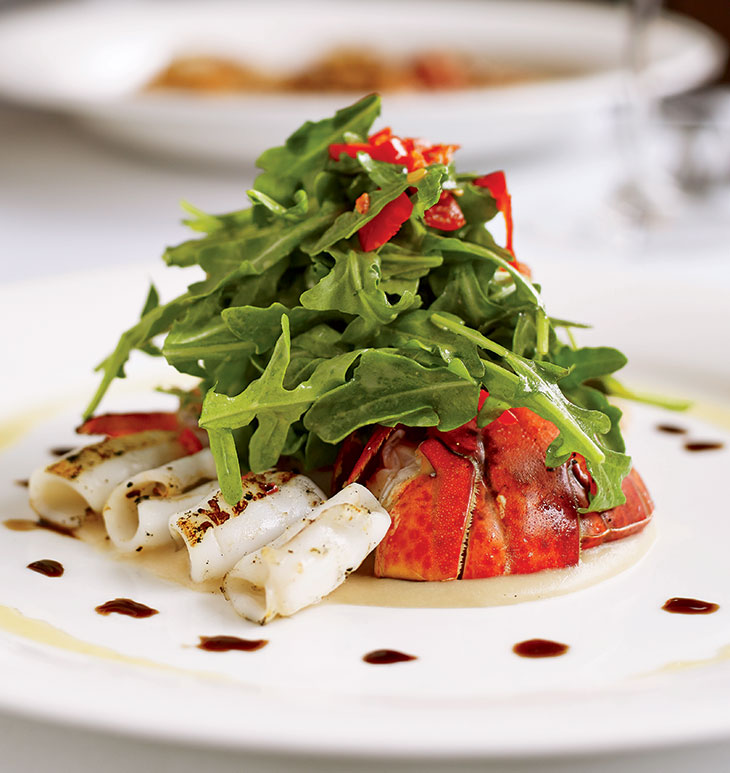
Photo Credit : Heath Robbins
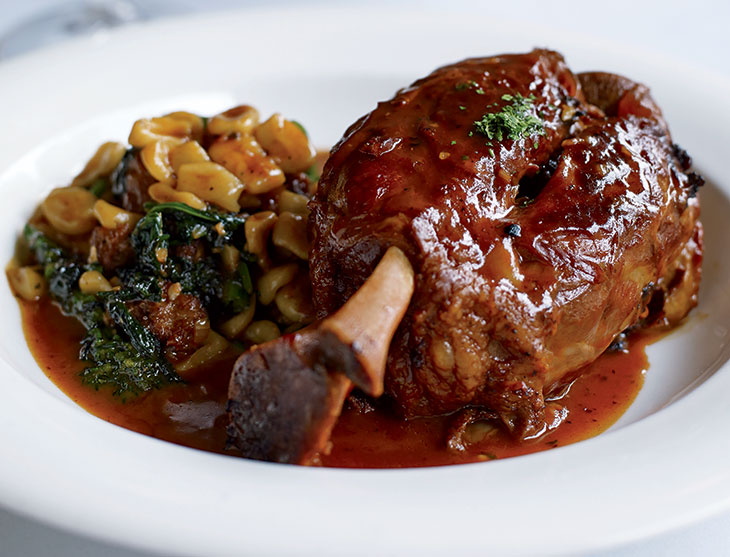
Photo Credit : Heath Robbins
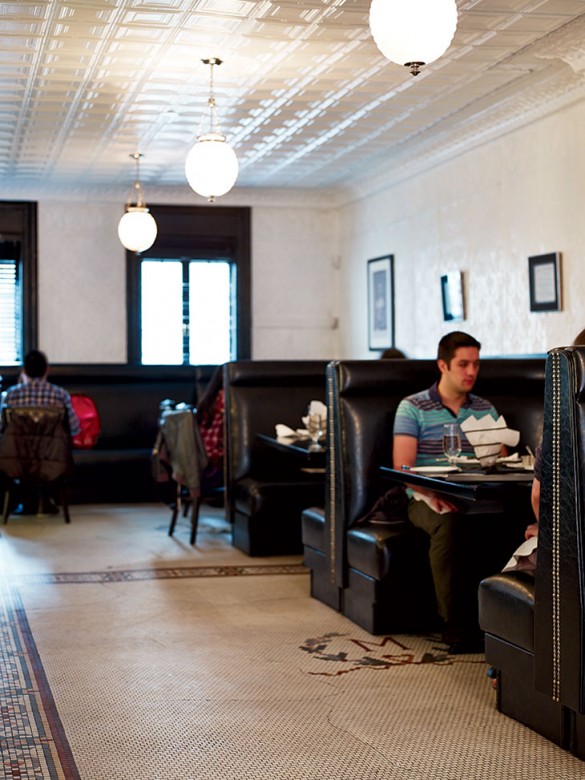
Photo Credit : Heath Robbins
IRISH FOOD The Druid | Cambridge, MA
For all the political and cultural influence that Irish immigrants have had on New England and, especially, Boston, it’s surprising that Irish cooking throughout the region is mostly limited to pubs. Of course, famine chased many of our ancestors from Ireland, so perhaps the modern Irish cooking revival simply hasn’t yet reached these shores.
Photo Credit : Heath Robbins
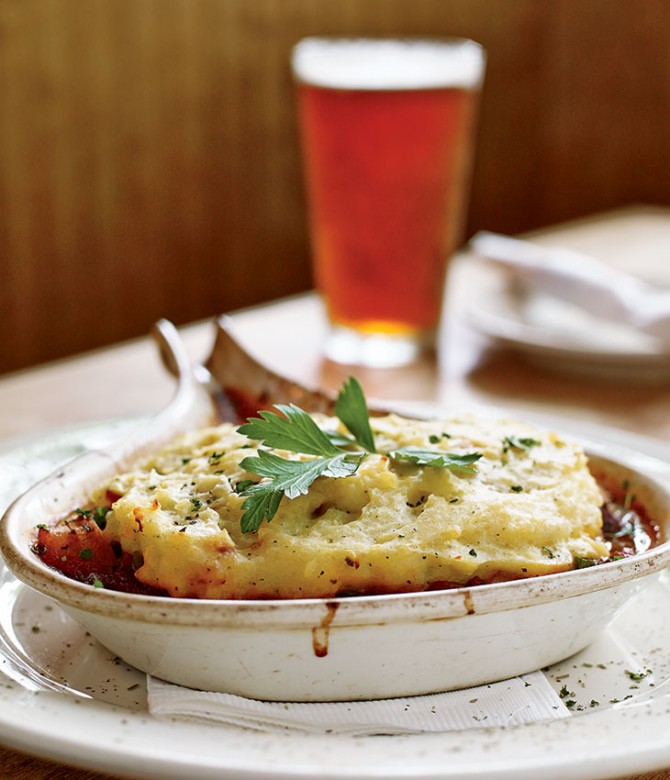
Photo Credit : Heath Robbins
Amy Traverso
Amy Traverso is the senior food editor at Yankee magazine and co-host of the public television series Weekends with Yankee, a coproduction with WGBH. Previously, she was food editor at Boston magazine and an associate food editor at Sunset magazine. Her work has also been published in The Boston Globe, Saveur, and Travel & Leisure, and she has appeared on Hallmark Home & Family, The Martha Stewart Show, Throwdown with Bobby Flay, and Gordon Ramsay’s Kitchen Nightmares. Amy is the author of The Apple Lover’s Cookbook, which was a finalist for the Julia Child Award for best first-time author and won an IACP Cookbook Award in the “American” category.
More by Amy Traverso

